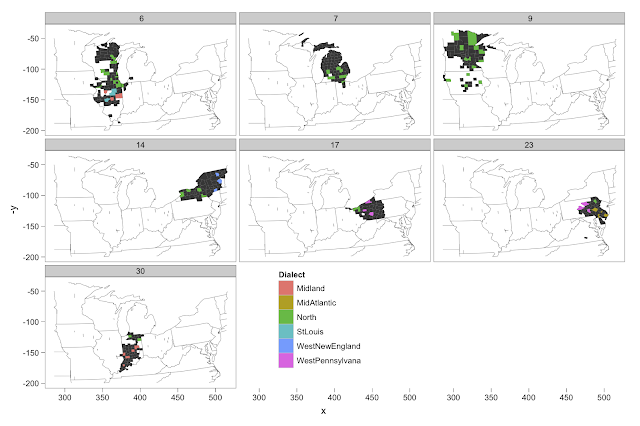"Let's take a chimpanzee, put it in a house in the upper west side with a psychoanalyst who doesn't know anything about chimpanzees, language, language acquisition, or sign language. Also, she has 7 other children in that house. What could go wrong?"
To put Project Nim in some perspective, Nim Chimpsky was born in 1973, which is two years after the Stanford Prison Experiment, and one year before the first legislation requiring Institutional Review Boards for institutions carrying out human subjects research. This is not to say that most social science research was so by-the-seat-of-their-pants back then, but it was a different time.
I came away from this film with a few different lessons.
Don't sleep with your advis(or/ee).
Just don't do it. Twice in the film, two different interviewees said about two different sexual entanglements, "I don't think it affected the science." But, as I heard Christopher Hitchens once say about interview subjects, a guilty mind wants to confess.The movie starts out with Nim being placed in the home of Stephanie LaFarge to be raised as a human child. Stephanie had 3 children of her own, and her husband had 4, bringing the total residency of her Manhattan brownstone to 7 human children, 2 adults, and 1 baby chimp. This frankly sounds a lot more like a reality TV show than a scientific experiment. Add to that the fact that they gave baby Nim alcohol and pot, and that Stephanie breast fed Nim, I'm not sure MTV could even air it.
Why on earth was Stephanie LaFarge recruited to be Nim's mother? As far as I can tell, her only qualification was her sexual history with Project Nim PI, Herb Terrace. Her graduate degree was in psychoanalysis. She had no experience with chimpanzee research, or language research of any kind, and in fact, she was hostile to the scientific goals. She wouldn't keep logs, didn't have a project plan, and eventually tried to restrict the other researchers' access to Nim.
The second affair which came up was, again, between the PI, Herb Terrace, and the head teacher on the project, who was only an undergrad at the time. The fallout of this brief relationship led to the head teacher leaving the project.
First of all, I just don't think it's possible to pursue a relationship between a professor and an advisee (especially an undergraduate) in an ethical way. Given the power dynamic, some form of coercion is nearly impossible to avoid. I feel a little uneasy saying so in a public forum, which I think goes to say that this is not a problem that academia has left behind in the 70's.
Secondly, all sorts of strange and bad things happened to the science because of the sex aspect. Nim would have never had such a strange early childhood, and would have had greater constancy with the project if the PI had not pursued inappropriate relationships.
Beware those with media savvy.
One frequently hears that scientists in general, and linguists in particular, don't do enough to popularize their research. Occasionally, we are scolded for holing up in our ivory towers, since we are too arrogant to try to share our love of science broadly.However, I think Project Nim has a lot to say about the perils of researchers who are a little too keen to popularize their research. One of the ASL teachers on the project described Herb Terrace as an "absentee landlord," who only showed up for photo-ops and media interviews. All in all, the project appears to have been planned far better from a media perspective than from a research perspective.
In case you were unaware, research, even really cool and good research, doesn't just show up on TV out of nowhere. It takes deliberate attempts on the part of the researcher or the university to drum up attention. And everything about this project seems perfectly constructed to be media fodder.
In the meantime, there were serious problems with the project, mostly having to do with Nim mauling research assistants, which Herb Terrace didn't really address, and had a hard time recollecting in the documentary interviews. The most serious incident, where Nim nearly bit through an interpreter's face, Terrace's reported reaction was that he was worried she would sue him, or that "it would get out."
It was a little hard for me not to think of Marc Hauser during the movie, another high profile non-human primate researcher who has recently fallen on hard times due to questionable ethics. The connection between Terrace and Hauser is tenuous, but they run together in my mind, I guess, because they both worked hard to popularize their research.
And this is why I, at least, am frequently wary of active researchers who are also active popularizers of their own research. It seems almost synonymous with sloppy research and compromised ethics in my mind.
Humans are not socialized chimpanzees
This certainly isn't a new lesson for me, because I've never really thought that humans are just socialized chimpanzees. However, I really like how this point was hammered home in a real way.In discussions about "human nature," the notion that our "true" nature is somehow more brutish and violent seems to come up a lot. In this conception, society is merely a veneer over top our inner chimp.
Well, society didn't do too much to cover over Nim's external chimp. Our "true" human nature is manifest in the activity of all humans, meaning it must be very broad, and non-uniform, but non-arbitrary at the same time.
Interestingly, I've also heard of research trying to figure out if dogs are just socialized wolves. A bunch of researchers tried to raise wolf pups as if they were dogs, a much more achievable task, I think, than raising a chimp as a human. The results were much the same as for Nim. After infancy, the wolves went nuts and tore the place apart, and the experiment had to be abandoned.





